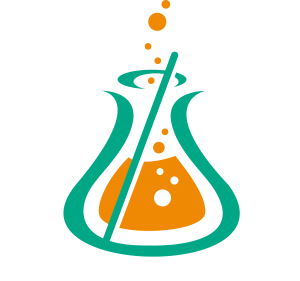Papanicolaou Stain, EA-50, Fast Green
Specially formulated for GYN specimens with a lower concentration of Light/Fast Green.
SOLUTIONS:
| 500 ml | 1 Gallon | |
| Hematoxylin Stain, Gill I | Part 1180A | Part 1180C |
| Hematoxylin Stain, Gill II | Part 1180D | Part 1180F |
| Papanicolaou Stain, OG-6 | Part 1330A | Part 1330B |
| Papanicolaou Stain, EA-50, Fast Green | Part 1310A | Part 1310B |
| Papanicolaou Stain, EA-65, Fast Green | Part 1320A | Part 1320B |
| Papanicolaou Stain, EA-50, Light Green | Part 1312A | Part 1312B |
Additionally Needed:
| Alcohol, Ethyl Denatured, 95% | Part 10842 |
| Lithium Carbonate, Saturated Aqueous OR Scott Tap Water Substitute |
Part 12215 OR Part 1380 |
| Alcohol, Ethyl Denatured, 70% | Part 10844 |
| Alcohol, Ethyl Denatured, 100% | Part 10841 |
| Xylene, ACS | Part 1445 |
For storage requirements and expiration date refer to individual bottle labels.
APPLICATION:
Newcomer Supply Papanicolaou (Pap) Stain provides classic staining solutions for cytology preparations, allowing for crisp, distinct nuclear detail and differentially stained cytoplasm. Gill Hematoxylin is the optimal nuclear stain and the two counterstains, Orange Gelb (OG) and Eosin Azure (EA) provide the subtle range of green, blue, and pink hues to the cellular cytoplasm.
Papanicolaou Stain, EA, is comprised of a combination of two dyes: Eosin Y and Fast Green SF or Light Green. EA-50 and EA-65 denote the varying proportions of dyes in each solution. The stains are suitable for both Gyn (EA-50) and Non-Gyn (EA-50, EA-65) specimens. Formula of choice will depend upon staining preference.
METHOD:
Technique/Fixation: Preparation technique and choice of fixative is dependent on specimen types.
Solutions: All solutions are manufactured by Newcomer Supply, Inc.
STAINING PROCEDURE:
-
- Fix in 95% Ethyl Alcohol for 5-10 minutes.
-
- Fixation times may vary depending on specimen type.
-
- Rinse in running distilled water for 1 minute.
- Stain in Hematoxylin Stain, Gill I or Gill II for 2 to 6 minutes, depending on preference of nuclear stain intensity.
- Wash in distilled water until clear.
- Blue slides in Lithium Carbonate, Saturated Aqueous (Part 12215) or Scott Tap Water Substitute (Part 1380) for 30 seconds.
- Wash in running distilled water for 30 seconds.
- Dehydrate in 70% Ethyl Alcohol: 10 dips.
- Dehydrate in 95% Ethyl Alcohol: 10 dips.
- Stain in Papanicolaou Stain, OG-6 for 1-2 minutes, depending on specimen type and preferred stain intensity.
- Rinse in two changes of 95% Ethyl Alcohol; 10 dips each.
- Stain in Papanicolaou Stain, EA-50 or EA-65 for 3-5 minutes, depending on specimen type and preferred stain intensity.
- Dehydrate in two changes each of 95% and 100% ethyl alcohol. Clear in three changes of xylene, 10 dips each; coverslip with compatible mounting medium.
- Fix in 95% Ethyl Alcohol for 5-10 minutes.
RESULTS:
| Chromatin | Blue |
| Keratin | Orange |
| Squamous cells | Shades of pink |
| RBCs, nucleoli, cilia | Shades of pink |
| Cytoplasm | Shades of blue-green |
PROCEDURE NOTES:
-
- Pap stains can be implemented for either manual or automated staining. Timings may vary depending on staining platform used.
- Solutions should be filtered or replaced daily to prevent cross-contamination and maintain optimal staining.
- If using a xylene substitute, closely follow the manufacturer’s recommendations for the clearing step.
REFERENCES:
-
- Bancroft, John D., and Marilyn Gamble. Theory and Practice of Histological Techniques. 6th ed. Oxford: Churchill Livingstone Elsevier, 2008. 127-128.
- Carson, Freida L., and Christa Hladik Cappellano. Histotechnology: A Self-instructional Text. 4th ed. Chicago: ASCP Press, 2015. 326-327.
- Koss, Leopold G. Diagnostic Cytology and Its Histopathologic Bases. 3d ed. Philadelphia: Lippincott, 1979. 1218.
- Modifications developed by Newcomer Supply Laboratory.



